United States
Within a glittering facade of multi-colored glass, this huge building, 330 feet long, offers a vivid and varied view of America's "Challenge to Greatness" - a theme endorsed by the late John F. Kennedy. Included are two films - one of them a dramatization of the nation's immigrant origins, the other a color spectacular that whisks the visitor through America's past to a future landing on the moon. There is also a modern, computer-run research library. Engraved over the pavilion's entrance, lines from a poem by Archibald MacLeish provide a keynote to the exhibit: "America is never accomplished."
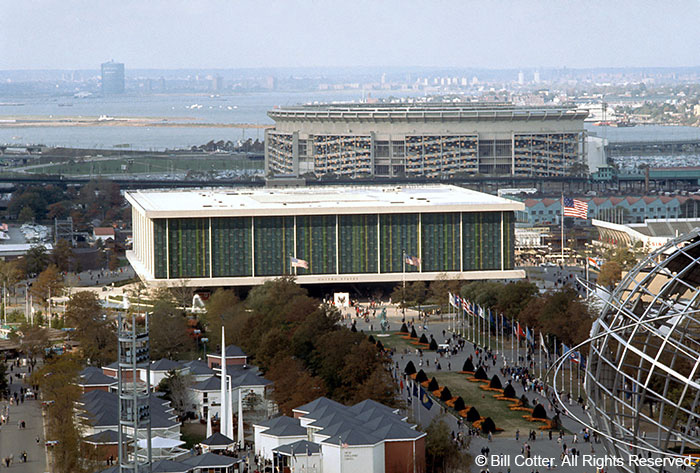
The United States pavilion was truly impressive. Seen here from the New York State Pavilion observation towers, the massive structure seemingly floated on four small support pylons. (CD #10 Set 54 #7)
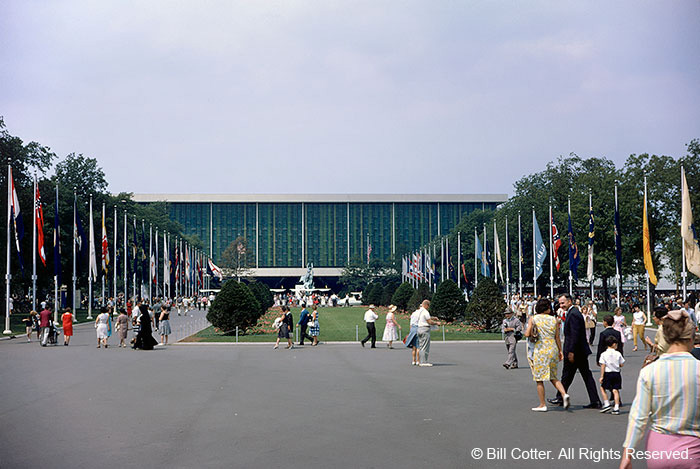
The United States pavilion was at one end of the Court of States, with the Unisphere at the opposite end. The colored wall was lit from behind, making it east to spot the building at any time of the day. (CD #60 Set 250 #10)
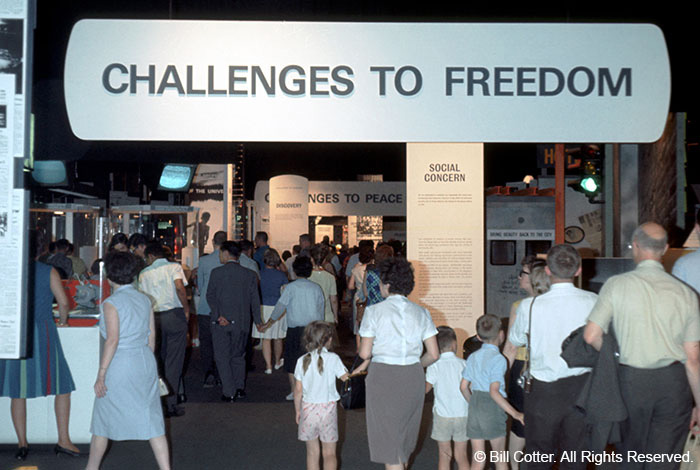
Peace and Freedom. Two large halls are filled with illustrations of the American pursuit of peace and liberty:
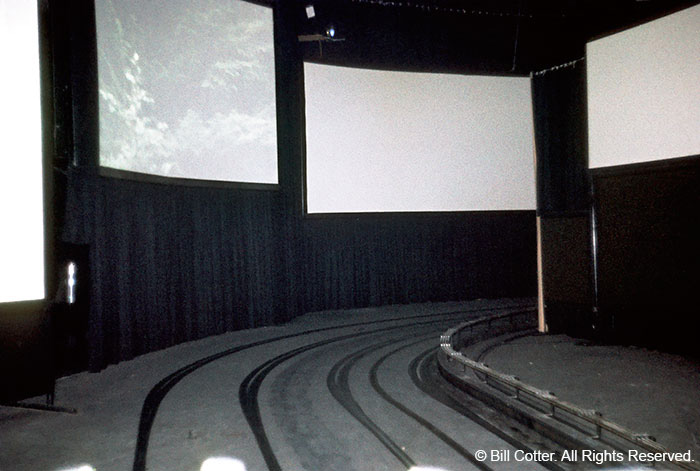
The Past as Prologue. The entire second floor of the pavilion is the setting for an extraordinary film, prepared with new motion picture techniques, which whips the whole American past into a prologue for the future. The production brings history back to life: lightning flashes as Ben Franklin flies his kite, the waters churn as Fulton launches his steamboat, and the cannon roar as Civil War breaks out. The viewer is swept into the future as a rocket soars past the swirling Milky Way, to the moon and then beyond. Shown continuously, the film employs a host of revolutionary techniques - sliding screens, rising screens, screens that form a tunnel, and explosive sound effects. Visitors see the movie as they ride on moving grandstands.
The multi-media presentation was quite effective. Audiences were amazed as their seats began the journey through the film experience, with images projected at unusual angles and on moving screens. (CD #TBD Set 345 #3)
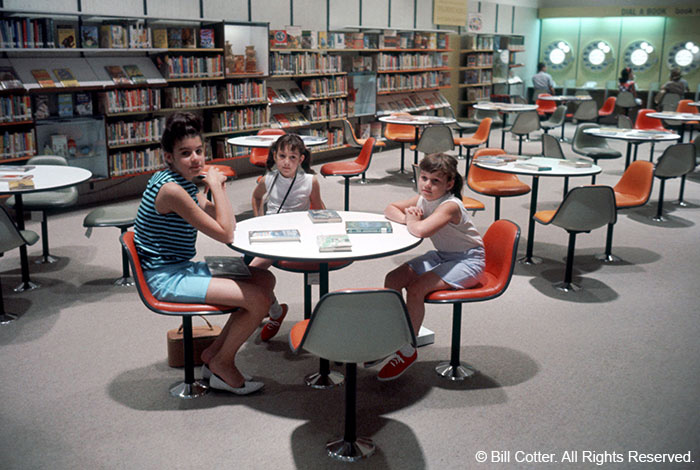
Pavilion Postscript. Before leaving the building, visitors are offered the following services in the specially created "Challenge of Information" Library:
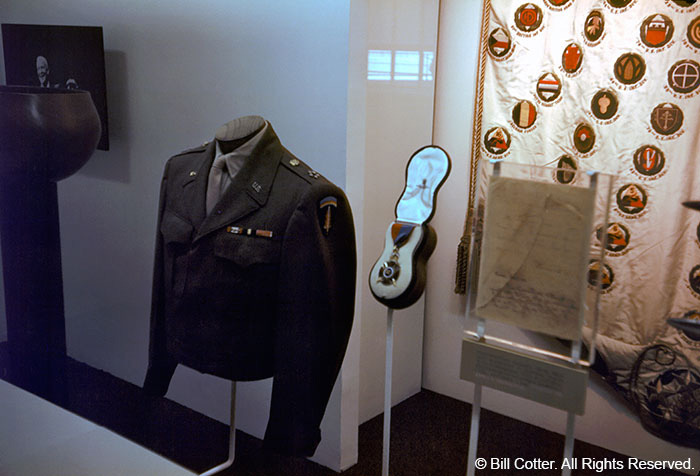
In 1965. a new "Hall of Presidents" was added featuring displays on America's chief executives. Pictured here is part of the display on Dwight D. Eisenhower. (CD #64 Set 262 #5)
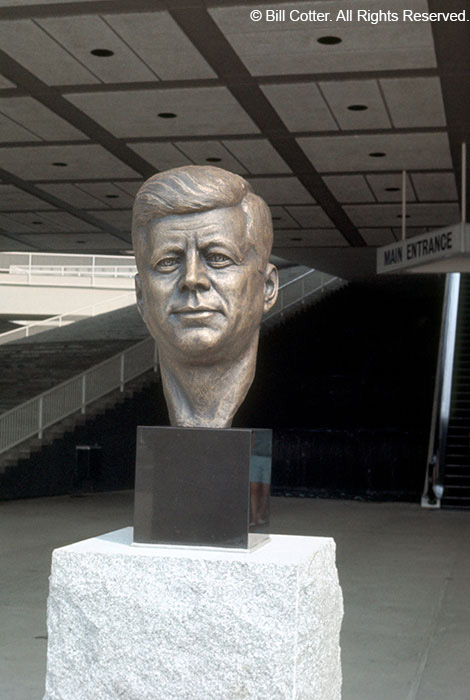
The pavilion also saluted John F. Kennedy, who was instrumental in seeing that the United States had a significant presence at the Fair. (CD #8 Set 41 #6)
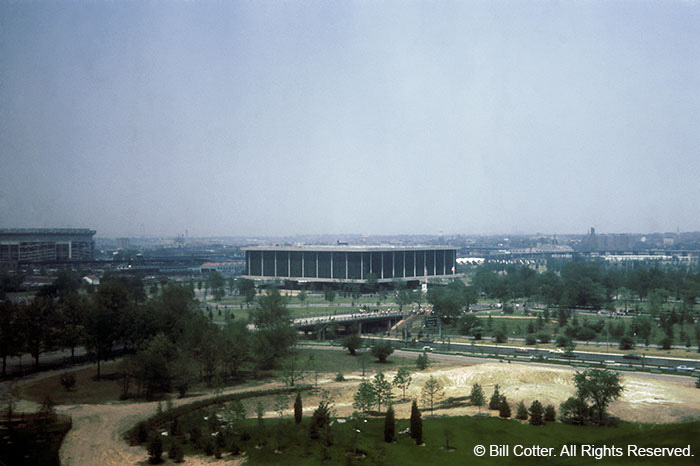
When the Fair closed the United States pavilion was one of the few structures not immediately torn down. The City of New York didn't want the massive structure as they had no plans on how to utilize it nor funds to maintain it, but the United States government didn't want to pay to demolish it. As a result the building sat empty and unused in the park for the next 11 years as potential uses were suggested, reviewed and abandoned. This view from 1967 shows the building in great shape; sadly, vandals took a toll on it and eventually it fell into such disrepair that demolition was the only option. The once proud symbol of American might and dreams was reduced to scrap in 1977. Pictures of the demolition will be posted here when they are restored.
Arthur Ashe Stadium now occupies the pavilion site. (CD #39Set 192 #4)
Want more information on the United States pavilion?
4-11-62 - Senators Slash World's Fair Sum
12-14-62 - Groundbreaking booklet
3-1-64 - U.S. Fair Pavilion Helped by Gifts
Business Screen magazine
United States Pavilion at the New York World's Fair: Important Events
Challenge to Greatness computer printouts
Essays from Encyclopedia Britannica
Reading lists
Please let me know if you have more of these printouts to share.
